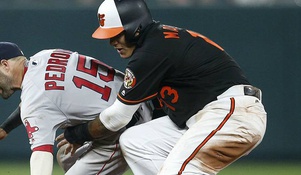Productive Plate Apperence Average: A new way to look at hitters

Baseball has long been a game of statistics like batting average, slugging percentage, earned run average and saves, just to name a few.
At the turn of the century, sabermetrics introduced a more advanced way to measure individual stats in baseball, some examples are wins above replacement, skill interactive ERA and fielding independent pitching to name a few.
However, baseball is also a team sport and sometimes stats, other than team wins, cannot encompass that aspect of the game. Therefore I propose a new stat, a productive plate appearance average (PPAA).
Currently, MLB has a batting average which gives a percentage of at-bats where the player gets a hit and on base percentage which gives a percentage of plate appearances a player gets on base. This new stat, PPAA, would be similar to both of these stats in that it will give a percentage of at-bats that are considered productive.
Now what is considered a productive plate appearance? Everything considered as getting on base would be a productive plate appearance. Then, things like sacrifices and bunts would also be considered a productive plate appearance.
Outside of the typical “sacrifice” plays there are also productive plate appearances that cause outs.
For example, consider this scenario: there is a runner on second with no outs and the batter hits the ball to the right side of the diamond to advance the runner to third. This is a team play where the batter sacrifices himself to advance the runner and give the next batter a great run batted in opportunity.
Another way to define a productive at-bat would be driving a pitcher's pitch count up. Some batters have plate appearances that last 11,12 and even 13 or more pitches. A plate appearance like this takes an inning off of the pitchers start, which means the bullpen is used earlier which can be great for a team.
Since PPAA encompasses everything around getting on base, it will never be lower than a batter’s on base percentage (OBP) and probably higher. In 2016 the average OBP was .322 therefore, an average PPAA could be .375-.400 where a all-star ball player could have an PPAA of .500 and a MVP caliber player would have one around .650.
This stat would be able to describe how productive a player is at the plate. It would be able to tell an organization how much of team player different players are as well. The stat would be another way to look at batters and better construct a lineup. These productive at-bats can lead to runs and help a team’s offense, especially a team that plays a lot of small ball.






